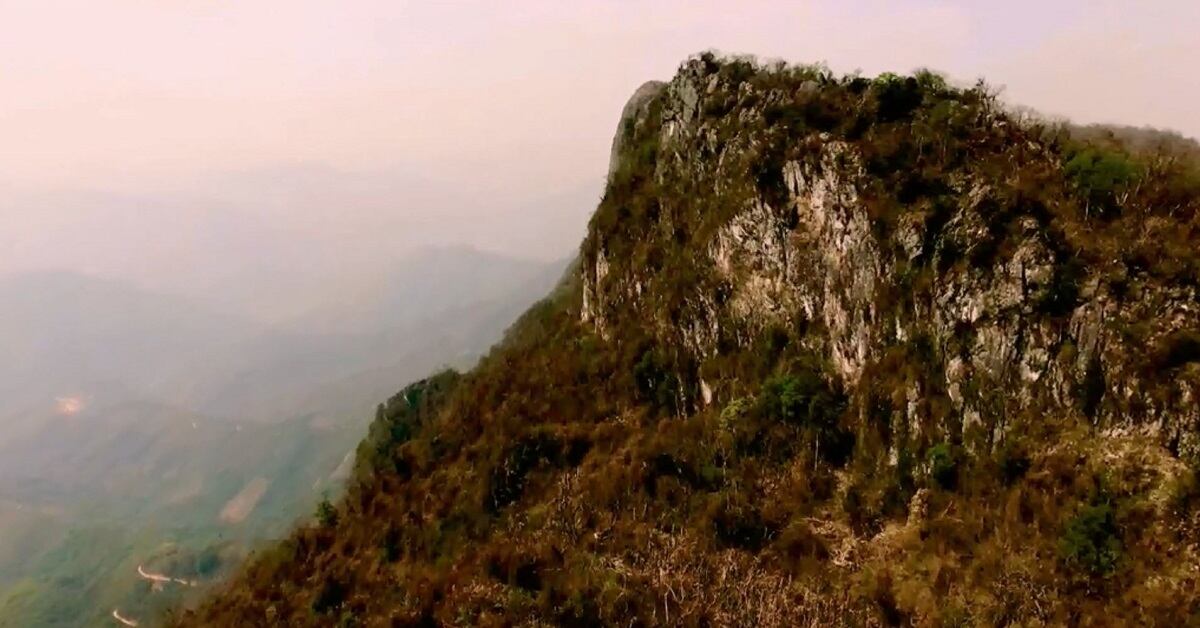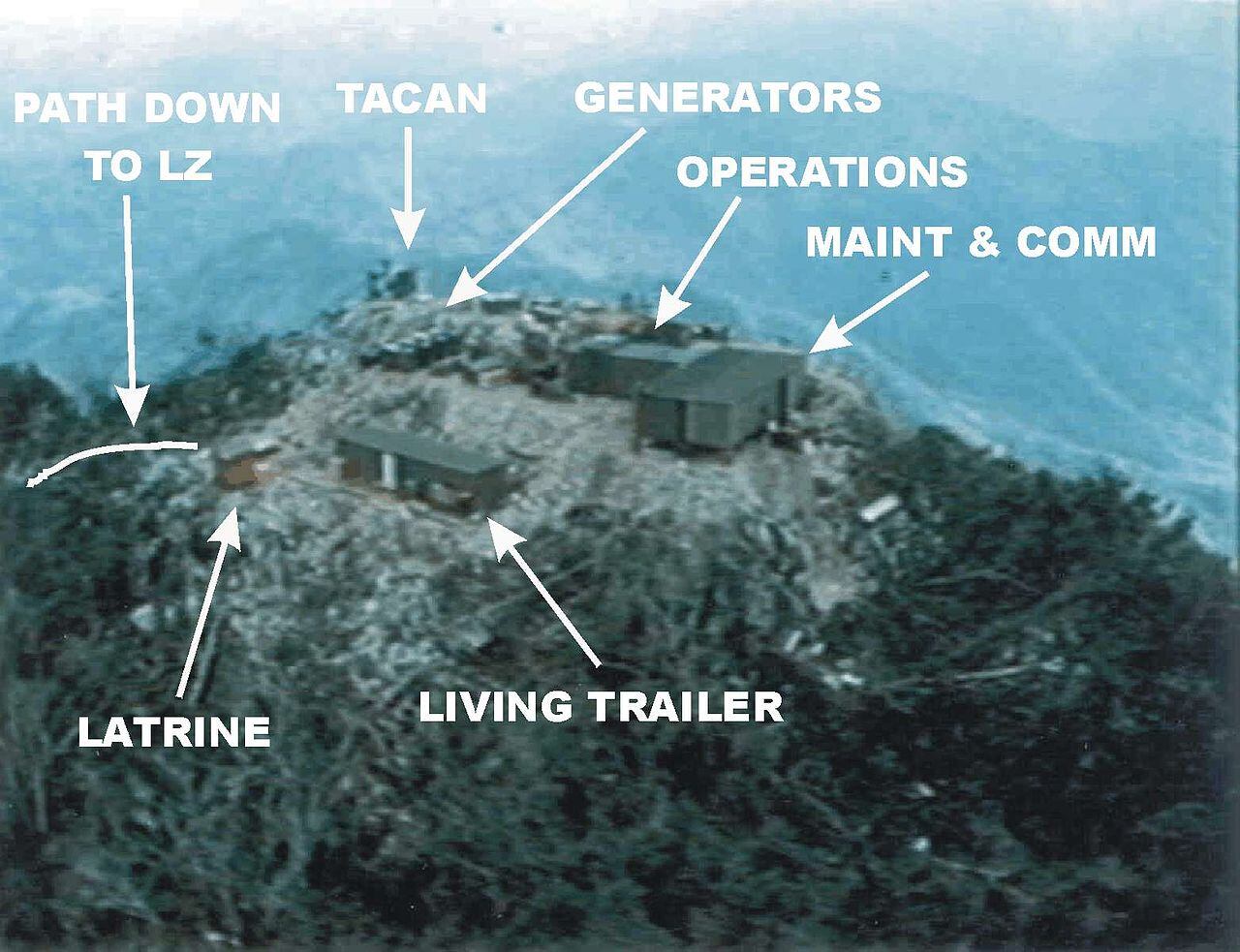A monument was unveiled at Maxwell Air Force Base, Alabama, Monday to mark the 50th anniversary of 12 airmen who died defending Lima Site 85, a classified outpost in Laos that was overrun by North Vietnamese fighters in 1968.
One of those airmen, Chief Master Sgt. Richard Etchberger, posthumously received the Medal of Honor in 2010, after the mission was finally declassified. He was initially awarded the Air Force Cross because of the political sensitivity surrounding missions in Laos at the time, according to the Library of Congress.
The families of those who died at the outpost were invited to Maxwell AFB for the ceremony held by the Air Force Enlisted Heritage Research Institute, according to the Air Force.
“There were 12 families that were honored today,” said Cory Etchberger, son of Richard Etchberger, according to an Air Force account of the ceremony. “What we really tried to do was make sure that the families, who sacrificed so much, were recognized today, and I think we were successful at that.”

Cory was only 9 years old when his father passed away. The Pentagon told him that his father died in a helicopter accident in Southeast Asia.
The official account omitted the fact that the elder Etchberger had actually died after staving off an assault by North Vietnamese commandos on a forgotten jungle mountain, and was credited with saving the lives of three other airmen.
“The site was established on top of a 5,800-foot mountain to provide radar vectors to F-105 fighters so that they could position over the targets in and around the key cities of Hanoi and Houaphanh during monsoon season, when visual bombing was not possible,” said retired Col. Joe Panza, who piloted one of the helicopters that rescued survivors of the attack on Lima Site.
From November 1967 to March 1968, the wayward outpost directed 507 strike missions in North Vietnam and Laos, 27 percent of all the airstrikes in those areas, according to an archived article on Air Force Times.
That success came at a cost, according to Col. Gerald Clayton, who had handpicked the air commandos to man the outpost, and was there himself.
RELATED

“The North Vietnamese realized when we were bombing them through overcast skies that they must be coming from somewhere,” Clayton said. “It was just a matter of time.”
Over the final three months of the outpost’s existence, the airmen survived multiple attacks. North Vietnamese bi-planes, called AN-2 Colts, conducted rocket attacks and gun runs against the outpost that killed some of the local Laotian guerrillas paid by the CIA to protect the airmen. But because the outpost was positioned on a steep 5,800-foot cliff, enemy fighters had a difficult time mounting a formidable assault.
By March 1968, though, the North Vietnamese had managed to encircle the site.
“Eventually, [Etchberger] and his team could look through their binoculars and see that their mountain was surrounded by thousands of North Vietnamese troops,” former President Barack Obama said during the Medal of Honor award ceremony in 2010.

“[Etchberger] and his crew at that point had a decision to make — ask to be evacuated or continue the mission for another day. They believed that no one could possibly scale the mountain’s steep cliffs. And they believed in their work. So they stayed. They continued their mission,” Obama said.
Plans were drawn up to eventually rescue the 19 Americans, but an early morning assault on March 11 ruined those plans, and proved the enemy could scale those cliffs.
Only seven Americans survived past 3 a.m.
First-hand accounts recall Etchberger fighting off the enemy while tending to the wounded in the final stretch. Clayton said he saw Etchberger load wounded Americans into the rescue slings of hovering helicopters, refusing to leave until all others were loaded.
”Etchberger single-handedly held off the enemy with an M-16, while simultaneously directing air strikes into the area and calling for air rescue,” his Medal of Honor citation reads. “With the arrival of the rescue aircraft, Chief Etchberger, without hesitation, repeatedly and deliberately risked his own life, exposing himself to heavy enemy fire in order to place three surviving wounded comrades into rescue slings hanging from the hovering helicopter waiting to airlift them to safety.”
After finally boarding himself, Etchberger was struck by an armor-piercing round that ripped through the floor of the helicopter. He bled to death en route to an air base in Thailand.
Etchberger was originally nominated for the Medal of Honor in 1968, but President Lyndon Johnson didn’t approve it, because the U.S. government wasn’t supposed to have troops in Laos.
Kyle Rempfer was an editor and reporter who has covered combat operations, criminal cases, foreign military assistance and training accidents. Before entering journalism, Kyle served in U.S. Air Force Special Tactics and deployed in 2014 to Paktika Province, Afghanistan, and Baghdad, Iraq.




